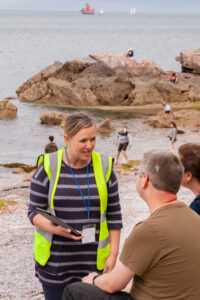 Museums are facing sizable challenges in their recovery from the Covid 19 pandemic, with visitor numbers significantly down on what museums predicted and ongoing disruption affecting their ability to reopen at full capacity. Compounding these challenges, museums are experiencing a ‘perfect storm’ which has negatively affected volunteer capacity, according to a new report from Museum Development England.
Museums are facing sizable challenges in their recovery from the Covid 19 pandemic, with visitor numbers significantly down on what museums predicted and ongoing disruption affecting their ability to reopen at full capacity. Compounding these challenges, museums are experiencing a ‘perfect storm’ which has negatively affected volunteer capacity, according to a new report from Museum Development England.
The report, which draws on data from the previous two years (2019/20 and 2020/21) now includes new data for 2021/22. The Annual Museum Survey 2022 details the profound effects that enforced closures and both volunteer and visitor hesitancy have had on the museum sector in England.
What is striking, however, is the way that key factors such as location and workforce have influenced the severity of these impacts for museums across the country.
Volunteer-run museums were three times more likely to have remained closed across 2021-22 than museums with paid staff. As a result, regions with a higher density of volunteer run museums, such as the South West of England, saw 11% of museums remain closed after lockdown guidance was lifted. Aside from those regions with a high number of volunteer-run museums, there was still a significant regional variance. 12% of museums in London remaining closed whilst in the neighbouring area of the South East only 2% of museums chose not to open once able. Across England many of the museums remaining closed are categorised as micro museums, which usually receive fewer than 10,000 visitors each year. 60% of micro, independent museums are wholly volunteer run compared to 14% of all other museums. Importantly, well over a third of museums fit into this micro category, representing 37% of Independent, Local Authority and University museums sector across England.
In stark contrast, the larger the museum the more likely they were to be operating at higher levels of capacity. Over a third of museums that usually receive over 100,000 visitors in a year were able to operate an average capacity of 70% or more. However, visitor numbers received an unwelcome knock back due to the Omnicron variant which arrived in winter 2021 and hindered the previous gains made in rebuilding visitor confidence.
Museum organisations that operate multiple museum sites appear to have fared significantly worse than their single site counterparts. 86% of these organisations reported a decrease in income, 34% made staff redundancies and 91% reported a decrease in volunteer hours. In this category of museum organisation, 76% are in receipt of public investment via local government and 64% received income from Arts Council. 60% of these museums are operated as part of a Local Authority.
The negative impact of Covid-19 has not just been about loss of income or visitors. The survey also highlights the sustained damage to volunteer capacity within the sector. The report draws a clearer picture on the continued loss of volunteer capacity from levels in 2019/20, with a reported 16% reduction in volunteers and an accompanying 37% reduction in volunteer hours. This loss of volunteer capacity appears to have been felt most keenly by museum organisations operating multiple museum and heritage sites and those museums with paid staff.
The findings from the report provide valuable insights for museums, policymakers and those working in the cultural sector.
Victoria Harding, Programme Manager at South West Museum Development, and lead on the Annual Museum Survey, said “Firstly, thank you to the 717 museums that participated in the survey this year and made this research possible. Whilst the peak of the pandemic has passed, many of the challenges remain as pertinent today as they did in 2020. The sector has worked hard to take advantage of opportunities, whether through new funding routes or adapting delivery. Visitor numbers are five times higher than last year, they are still 45% lower than the pre-pandemic year.
The ongoing impact of the pandemic has been broadly universal, with poor visitor recovery and fewer volunteers returning. The precariousness of the volunteer workforce in the face of societal changes such as a longer working life, increased caring responsibilities, the financial squeeze facing households are not new. What is clear from this new research is that the pandemic has accelerated the situation at a time when the sector has limited capacity to adapt to this new world.”
“Having a strong grasp of the diverse nature of museums’ operating context is not only critical in understanding how the pandemic has impacted the sector and how it is adapting and reconstructing services, but also vital in informing and developing effective measures, policies and programmes of support to move the sector to a stronger future.”
